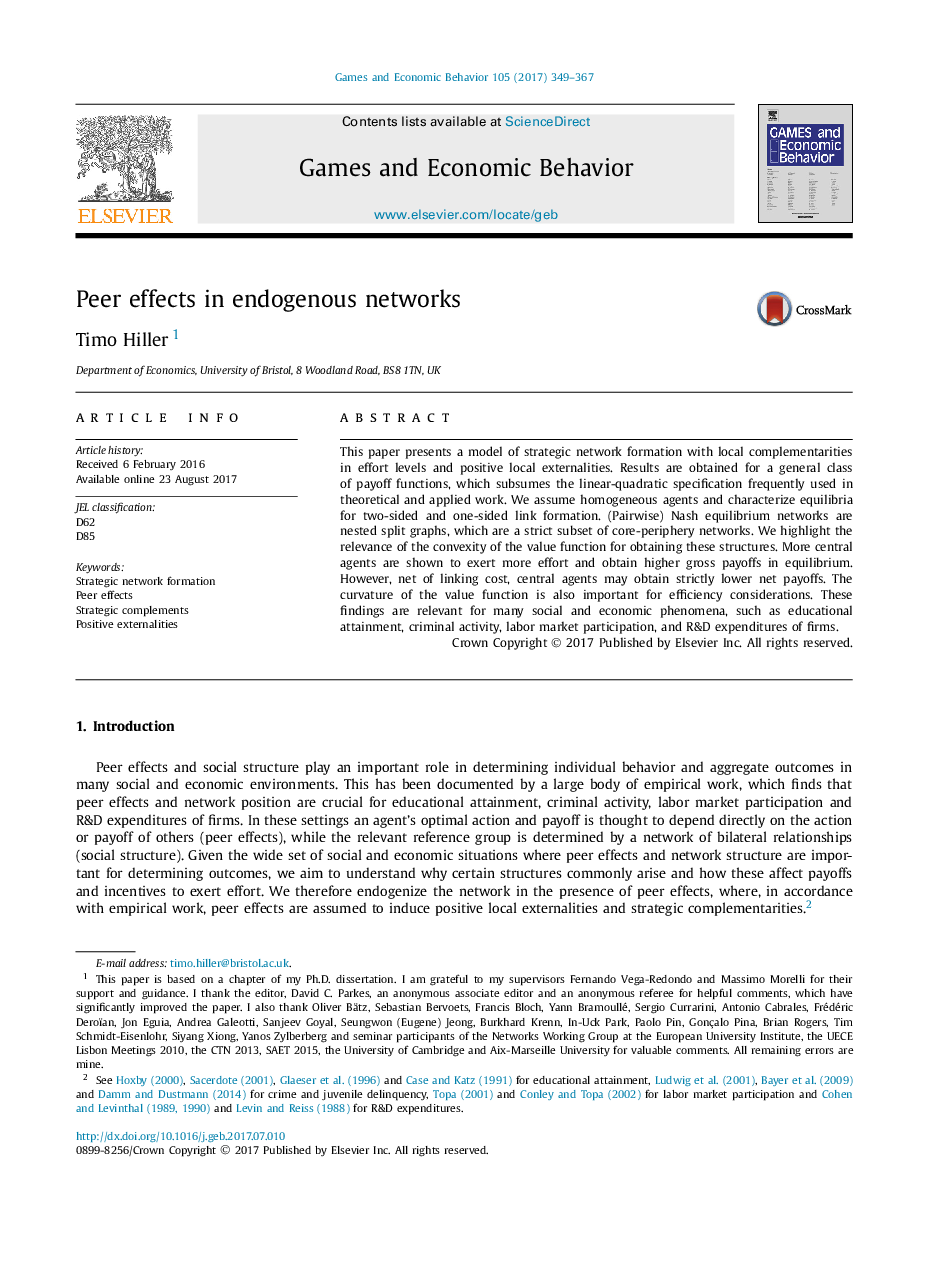| Article ID | Journal | Published Year | Pages | File Type |
|---|---|---|---|---|
| 5071407 | Games and Economic Behavior | 2017 | 19 Pages |
Abstract
This paper presents a model of strategic network formation with local complementarities in effort levels and positive local externalities. Results are obtained for a general class of payoff functions, which subsumes the linear-quadratic specification frequently used in theoretical and applied work. We assume homogeneous agents and characterize equilibria for two-sided and one-sided link formation. (Pairwise) Nash equilibrium networks are nested split graphs, which are a strict subset of core-periphery networks. We highlight the relevance of the convexity of the value function for obtaining these structures. More central agents are shown to exert more effort and obtain higher gross payoffs in equilibrium. However, net of linking cost, central agents may obtain strictly lower net payoffs. The curvature of the value function is also important for efficiency considerations. These findings are relevant for many social and economic phenomena, such as educational attainment, criminal activity, labor market participation, and R&D expenditures of firms.
Related Topics
Social Sciences and Humanities
Economics, Econometrics and Finance
Economics and Econometrics
Authors
Timo Hiller,
